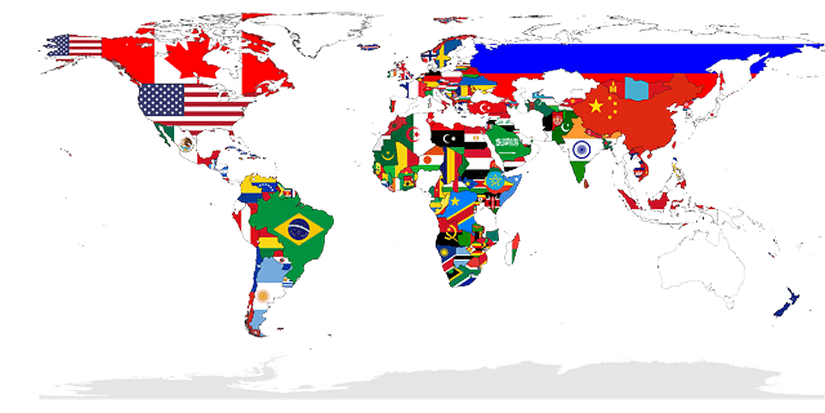By Orbex
Last night, Australia’s Prime Minister announced a change in direction regarding the country’s covid policy. This basically amounted to admitting defeat.
The island nation had received plaudits for its handling of the crisis. Indeed, at the start of the year, it looked to be well-positioned for a recovery.
So what went wrong?
Initially, Australia was able to bank on its isolation to keep infections to a minimum and maintain domestic activity as close to normal. Lockdowns were rare (though severe when called for) and localized.
Moreover, even though Australia’s GDP suffered from the global situation, the domestic market appeared to be relatively solid.
Free Reports:
 Sign Up for Our Stock Market Newsletter – Get updated on News, Charts & Rankings of Public Companies when you join our Stocks Newsletter
Sign Up for Our Stock Market Newsletter – Get updated on News, Charts & Rankings of Public Companies when you join our Stocks Newsletter
 Get our Weekly Commitment of Traders Reports - See where the biggest traders (Hedge Funds and Commercial Hedgers) are positioned in the futures markets on a weekly basis.
Get our Weekly Commitment of Traders Reports - See where the biggest traders (Hedge Funds and Commercial Hedgers) are positioned in the futures markets on a weekly basis.
You can’t bet on luck
As a State health official put it, Australia “lucked” itself into a suppression strategy. This is compared to a containment tactic, that most of the rest of the world followed instead.
At first, officials started with the “two weeks to flatten the curve” approach. Then, after Australia’s initial success in keeping the virus at bay, they were able to switch to virtually eliminating all domestic transmissions.
However, with that success came a degree of overconfidence. Australia was late to start a vaccination program (after all, they weren’t having serious numbers of cases). In fact, just 11% of the population received at least one jab at this point.
Meanwhile, Australians returning from overseas and limited foreign travel eventually led to the virus breaking out of containment. As a result, a succession of lockdowns in major Australian cities followed. This has also shaken economic confidence, and most importantly, there is still no end to the disease.
So how is the country moving forward?
The new direction
PM Morrison’s announcement yesterday indicates that the government’s priority will no longer be to suppress domestic transmission of the disease, but rather seek to prevent serious cases.
The practical impact is that lockdowns should be less frequent. However, they could potentially last longer – in line with what has been seen in Europe. Nonetheless, several states have announced that their lockdowns will end in the coming days.
Meanwhile, the government is cutting the number of foreign visitors allowed into the country from around the 3,000/week allowed so far, in half.
The AUD had been trading relatively flat since peaking in February, but took a turn downward in June, as we anticipated. While that coincided with expectations of a drop in commodity prices, the RBA index showed that the prices for Australian commodities exports increased a further 5.6% in June.
It’s about the RBA
However, the lack of improvement in the domestic economy has kept investors assuming the RBA will keep rates low for much longer than initially thought. In an environment where most other major central banks are looking to normalize policy, this puts the AUD at a discount.
Should the new policy in Australia lead to fewer lockdowns (despite increasing case numbers) and the vaccine uptake rate finally start to improve, then the AUD could potentially see some strength in the future.
However, that’s still something of a tall order at this point.
By Orbex

- The Dollar Index strengthened on Powell’s comments. The Bank of Mexico cut the rate to 10.25% Nov 15, 2024
- EURUSD Faces Decline as Fed Signals Firm Stance Nov 15, 2024
- Gold Falls for the Fifth Consecutive Trading Session Nov 14, 2024
- Profit-taking is observed on stock indices. The data on wages in Australia haven’t met expectations Nov 13, 2024
- USD/JPY at a Three-Month Peak: No One Opposes the US Dollar Nov 13, 2024
- Can Chinese Tech earnings offer relief for Chinese stock indexes? Nov 13, 2024
- Bitcoin hits an all-time high above $88,000. Oil remains under pressure Nov 12, 2024
- Brent Crude Stumbles as Market Sentiments Turn Cautious Nov 12, 2024
- Bitcoin hits new record high just shy of $82,000! Nov 11, 2024
- The Dow Jones broke the 44 000 mark, and the S&P 500 topped 6 000 for the first time. The deflationary scenario continues in China Nov 11, 2024
